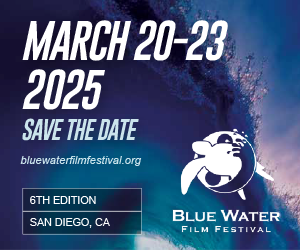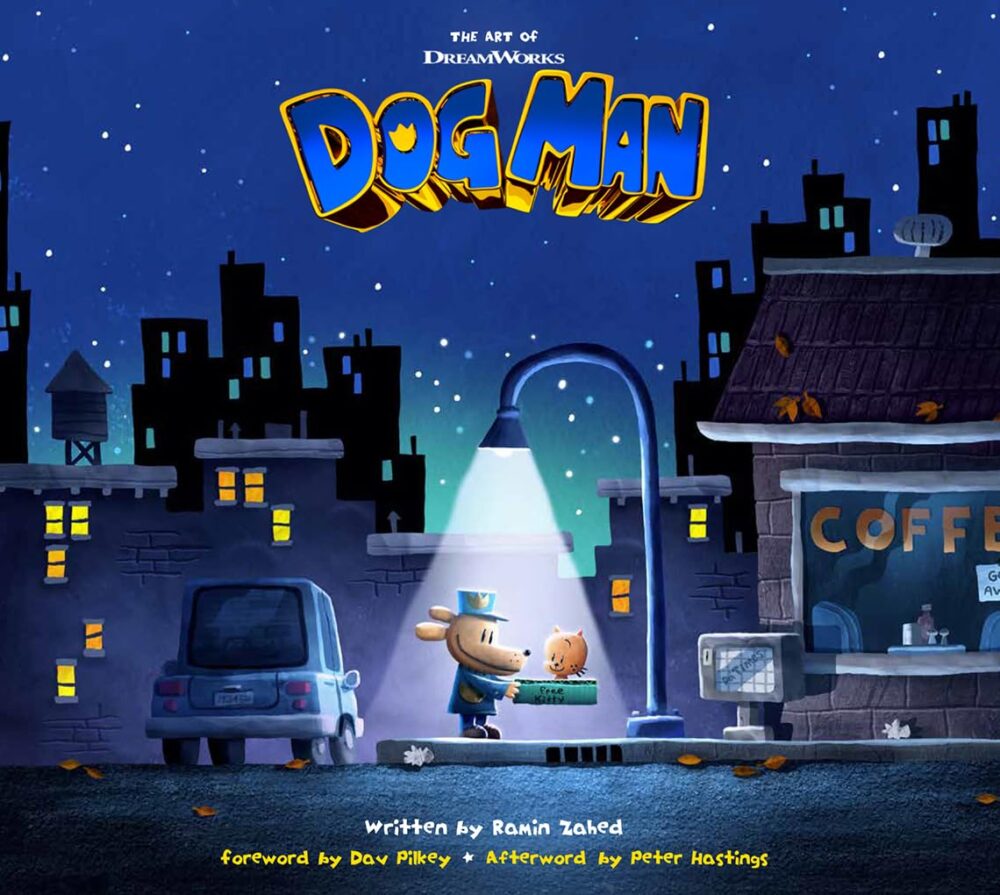|
Getting your Trinity Audio player ready...
|
Fans of the iconic Joe Dante horror-comedy and the next generation of Gremlins fans were given an early Halloween treat this month, with the launch of the Max Original animated series Gremlins: The Wild Batch. The new episodes follow the events of Gremlins: Secrets of the Mogwai, continuing the prelude to the 1984 movie as Sam, Gizmo & co. make their way to San Francisco. Joining the voice cast this season is Simu Liu (Shang-Chi and the Legend of the Ten Rings, Barbie, Kim’s Convenience) as a lovable rogue from the streets of 1920s Chinatown.
To get the scoop on the Wing family’s new chapter in the American West, we lobbed a few questions at series showrunner and executive producer Tze Chun (I’m A Virgo, Gotham) and executive producer Brendan Hay (Harvey Girls Forever!, Dawn of the Croods, Robot Chicken). Here’s what they had to say:
Animation Magazine: Can you tell us a bit about what makes the second season of the show special?
Tze Chun: Season 1 showed the origin story of how Gizmo met the old Mr. Wing from the beloved original movies and took place in 1920s Shanghai. Season 2 picks up a year later and shows how Gizmo, Elle and the Wing family end up in America. While Season 1 focused on mixing Mogwai mayhem with Chinese spirits and creatures from Chinese mythology, Season 2 features larger-than-life supernatural beings from American tall tales.
Brendan Hay: The beauty of being a TV show — vs. a film — is that we have so much more time to explore our characters and their world. So, Season 2 gives us a chance to learn more about Elle, show Gizmo’s temptations, and even examine how it must feel to be in the very unique position of “the world’s smartest evil Mogwai” for Noggin.
Plus, Gremlins 2: The New Batch is one of my all-time favorite movies, so I wanted to make sure our second season took equally big and wild swings.
Why did you decide on the new location and the new title for the show?
Tze: Even during the initial pitch for the series, we knew we wanted to bring our characters from Shanghai to America at some point. For the new title, The Wild Batch, we wanted something that showed audiences each season was its own event, with its own big concept.
Brendan: … While also connecting to the season’s tone and location by referencing the titles of both Gremlins’ sequel and a famous Western.
Was getting things in place easier for the second season since you already had a successful first batch under your belt?
Tze: Since animation takes so long to make, we actually had the first and second season finished before we even premiered Season 1! So, it was less of an, “Oh, this is easier,” and more of an, “Uh, I hope people like the first season because we already made a second one.”
Brendan: And in case we were ever tempted to get cocky, the writing on Season 2 coincided with the start of the pandemic. This whole season was written over Zoom. Thankfully, it went well, because our writers and production team are all incredibly talented and kind. Actually, looking back on it now, our daily writers room ended up being a constant source of fun during those weird, early days of COVID … so maybe we could’ve gotten cocky.
What were the biggest challenges of the second season?
Tze: I think in the writers room, we always wanted to push ourselves so the characters weren’t going through the same things they were going through in Season 1. In Season 2, Sam, Elle, Gizmo and the family are dealing with new problems, obstacles and personal issues they didn’t have to deal with in the first season. Elle has a big emotional story in Season 2 around her mom, Gizmo is dealing with possibly going bad, Sam is trying to own his own bravery and his family are dealing with their own conflicts. We wanted to make sure Season 2 felt as fresh for our characters as Season 1 did!
Brendan: We also had more characters to track in Season 2, since Grandpa and Noggin are getting bigger roles and we’re adding Chang. By the end of Season 2, we have quite the large ensemble.
On a technical level, our biggest challenge was the final two episodes of the season. I don’t want to spoil why, but please know that there is one natural element that I will try my best to never again write into an animated series.
What do you love about the visuals and the animation of the new season? Which studios worked on it (besides Warner Bros. Animation and Amblin, of course) and which animation tools were used?
Tze: I love that we’re getting to utilize the landscapes and iconography of the American West.
Brendan: We were thrilled to work again with our Season 1 partners, Blue Spirit in France and 88 Pictures in India. By the time we got to Season 2, they both totally understood our show and its unique tone, so they hit the ground running and just kept impressing us. Especially when we got to the huge scale of the two-part season finale.
Regarding the visuals, I was thrilled to see a period-accurate San Francisco this season. Our designers always manage to combine the real world and our pushed, mythical tone in expressive, interesting ways, and their take on 1920s Chinatown is one of my favorites of the series.
For animation, there is a … let’s call it a “musical number” that’s in the season finale that thanks to everyone’s work — from script to storyboards by Jacob Eaton to the timing and animation — that is maybe my favorite sequence of the series so far.
But really, our incredible line producer Danielle Witz and awesome asset supervisor Simon Thomas can tell you much more about the tools we used on Season 2. Here is their answer:
Danielle and Simon: Both of our partner studios, Blue Spirit and 88 Pictures, completed this series using totally different pipelines. Blue Spirit’s pipeline was a 3ds Max pipeline while 88 Pictures had a maya pipeline, so one of the big challenges of the show was ensuring both studios visually matched one another — purely based on visual reference we could provide them — since many of the software each studio used were not cross-compatible.
It was a fun challenge to try and push the lookdev & lighting of the series to feel more graphic and 2D while harnessing the cinematic impact of a 3D camera. The team really wanted final rendered images to look as much like the 2D artwork and painting as possible. I think we were successful in accomplishing that! Our “art of” the show looks pretty much 1:1 with what made it on screen. Blue Spirit had a very unique lighting rig/setup that allowed us to accomplish this, and 88 Pictures did a great job replicating.
What surprised you about the fan response to the first season?
Tze: Brendan and I were super excited to see so much positivity from the fans and critics for Season 1. It’s a beloved property and we were definitely worried about how this new take on it would be received, so it was a relief to be accepted by both the fans, but also Joe Dante and Spielberg, who couldn’t have been more encouraging of our work.
Brendan: I was also happy that my own twins were equal parts thrilled and scared by Season 1. That’s how I reacted to the original 1984 film and what I hoped to recreate for today’s kids (and especially my own).
What do you hope audiences will take away from Gremlins: The Wild Batch?
Tze: The burning desire for a Season 3! [Laughs]
Brendan: A newfound love and sympathy for Noggin and all Evil Mogwai.
Why do you think this wonderful franchise continues to attract a new generation of fans, 40 years after it was first introduced?
Tze: I think what attracts new generations of fans to Gremlins is that unique mix of tones from the original movies, which we’ve tried to lean into in the animated series — funny, scary, weird, gory, but still having a lot of heart.
Brendan: To steal a phrase from Tze: it’s the same reason so many of Amblin and Joe Dante’s movies from the ’80s are still beloved: they’re coming of age stories from a kid’s POV but with real life or death stakes. Those will resonate in any era, and we’re just glad to be a part of that heritage.
Part 1 of Gremlins: The Wild Batch launched on Max on October 3 and is available to stream now.






![GremlinsTheWildBatch_Still13 Gremlins: The Wild Batch [c/o Max]](https://www.beta.animationmagazine.net/wordpress/wp-content/uploads/GremlinsTheWildBatch_Still13-696x392.jpg)
![Tze Chun [ph: Pete Lee]](https://www.beta.animationmagazine.net/wordpress/wp-content/uploads/TzeChun-1_Photographer-Pete-Lee-240x240.jpeg)
![Brendan Hay [c/o Max]](https://www.beta.animationmagazine.net/wordpress/wp-content/uploads/BrendanHay-2508-240x240.jpeg)
![Gremlins: The Wild Batch [c/o Max]](https://www.beta.animationmagazine.net/wordpress/wp-content/uploads/GremlinsTheWildBatch_Still02.jpg)
![Gremlins: The Wild Batch [c/o Max]](https://www.beta.animationmagazine.net/wordpress/wp-content/uploads/GremlinsTheWildBatch_Still12.jpg)
![Gremlins: The Wild Batch [c/o Max]](https://www.beta.animationmagazine.net/wordpress/wp-content/uploads/GremlinsTheWildBatch_Still07.jpg)


 Win 'The Art of DreamWorks Dog Man'!
Win 'The Art of DreamWorks Dog Man'! 

